Understanding the societal trajectory induced by AI, and anticipating its directions so that we might apply it for achieving equity, is a sociological, ethical, legal, cultural, generational, educational, and political problem.
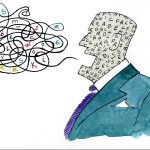
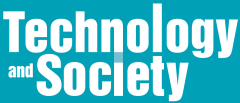

Understanding the societal trajectory induced by AI, and anticipating its directions so that we might apply it for achieving equity, is a sociological, ethical, legal, cultural, generational, educational, and political problem.

In 2020, our flagship ISTAS conference and the cosponsored conferences were huge successes, with record attendance, partly because going virtual allowed wider participation.

We can perhaps accept Weil’s starting premise of obligations as fundamental concepts, based on which we can also reasonably accept her assertion that “obligations … all stem, without exception, from the vital needs of the human being.”

Examining how face recognition software is used to identify and sort citizenship within mechanisms like the Biometric Air Exit (BAE) is immensely important; alongside this, the process of how “citizen” and “noncitizen” is defined, as data points within larger mechanisms like the BAE, need to be made transparent.

Public Interest Technology (PIT) is defined as “technology practitioners who focus on social justice, the common good, and/or the public… Read More
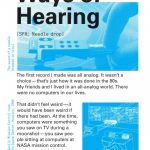
Damon Krukowski’s Ways of Hearing does for digital sound what Berger’s Ways of Seeing did for the reproduced image. He wants us to question what we hear, as well as what we’re no longer hearing, in the era of digital audio.
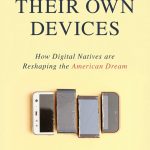
Albright’s book focuses on a group of Americans who live a life of digital hyper-connectivity. Mostly under age 50, this would include what are called Generation X (born between 1965 and 1979), Millennials (born between 1980 and 1999), and their offspring — some, as we have seen, still infants.

Contemporary circumstances in the United States, both in broader politics, recent protest movements around police brutality, and in the demographics of engineering education, have prompted us to look for new ways to bring theory on gender, race, and class to audiences who would not normally consider it their usual reading.

In 2021, Terri Bookman will become SSIT Administrator, and Heather Hilton, IEEE Publications Staff, will be Editorial/Production Associate for T&S Magazine

Technological determinism is a myth; there are always underlying economic motivations for emergence of new technologies. The idea that technology leads development is not necessarily true, for example, con-sider AI. It has been a topic of inter-est to researchers for decades, but only recently has the funding caught up, matching the motivation and enabling the development of AI-ori-ented technologies to really take off.

It is “seeing” that is most compelling when analyzing the relationship between architecture and race, especially, for example, when reexamined in literary works such as F. Scott Fitzgerald’s The Great Gatsby. Adrienne Brown, a professor who specializes in American and African American cultural production at the University of Chicago, takes her readers on a journey that recounts seeing racial characteristics in the early period of American skyscraper construction.

RFID, even though it underlies electronic toll collection and other systems we interact with every day and is poised to become practically ubiquitous, is far less conspicuous. Jordan Firth’s A Billion Little Pieces aims to bring RFID into the foreground, giving readers a sense of what the technology is, how it is being and could be used, and how concerned we should be about its implications, especially those regarding privacy.
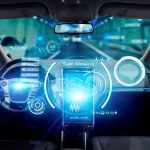
Ethical diversity refers to “diverse beliefs … as to what are the most ethically appropriate or inappropriate courses of actions,” and takes into account the different values and beliefs people hold [2]. This diversity is and has always been a source of confusion and conflict, from the personal to the international. The answer, however, is to have forums to debate and discuss the ethical choices embedded in everyday life, not algorithms that render the choice being made invisible.

The issue of air pollution is a “wicked problem” — complicated by incomplete knowledge, both within the scientific community and among various stakeholders.
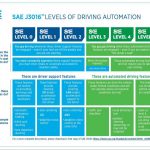
One of the major ways in which the development of self-driving cars has been discussed — the levels of automation drawn up by the Society of Automotive Engineers (SAE) — is misleading. A typology originally developed to provide some engineering clarity now benefits technology developers far more than it serves the public interest.

It is time to move beyond handwringing and nostalgia over our vanished American journalism past. While market forces will sustain some forms of serious reportage, evidence is mounting that creators of journalism in the public interest can’t innovate their way out of a deepening technological crisis.

With techno-feudalism, what is paid and permitted in a digital space is decided by asymmetric power, not mutual consent. Political approval for funding priorities, education programs and regulation all favor Big Tech.
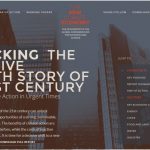
Will We Make Our Numbers? The year 2020 has a majority of the planet asking the simple question: “How do we stay alive? Competition is not working for the long-term sustainability of human and environmental well-being.

As we work to decouple carbon emissions and economic growth on the path to net zero emissions — so-called “clean growth” — we must also meaningfully deliver sustainable, inclusive growth with emerging technologies.

With more than 50% of the global population living in non-democratic states, and keeping in mind the disturbing trend to authoritarianism of populist leaders in supposedly democratic countries, it is easy to think of dystopian scenarios about the destructive potentials of digitalization and AI for the future of freedom, privacy, and human rights. But AI and digital innovations could also be enablers of a Renewed Humanism in the Digital Age.